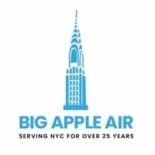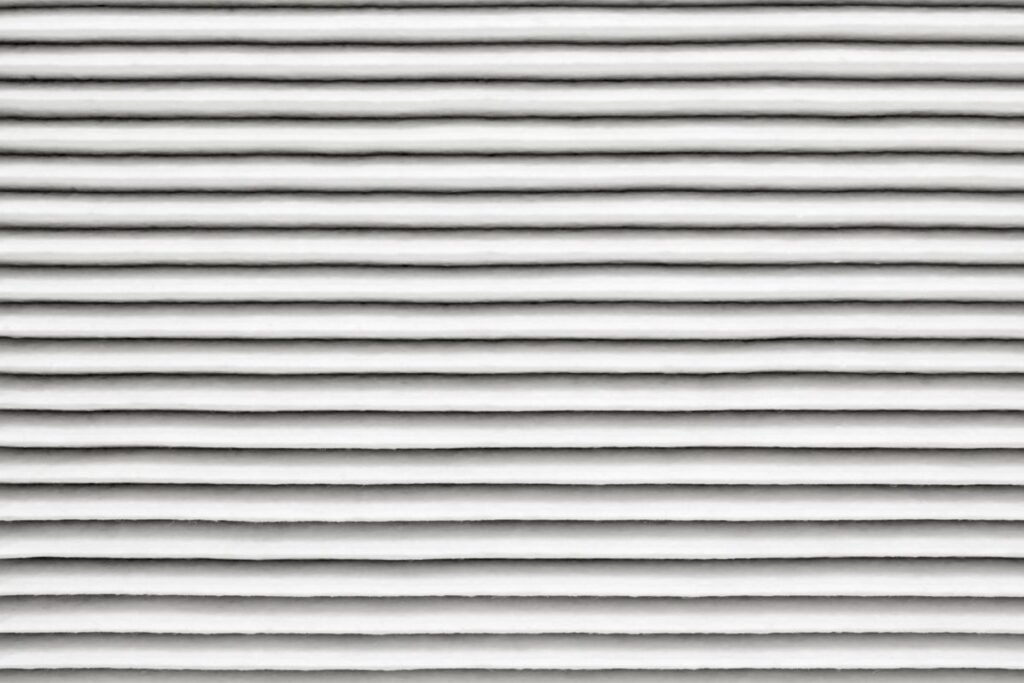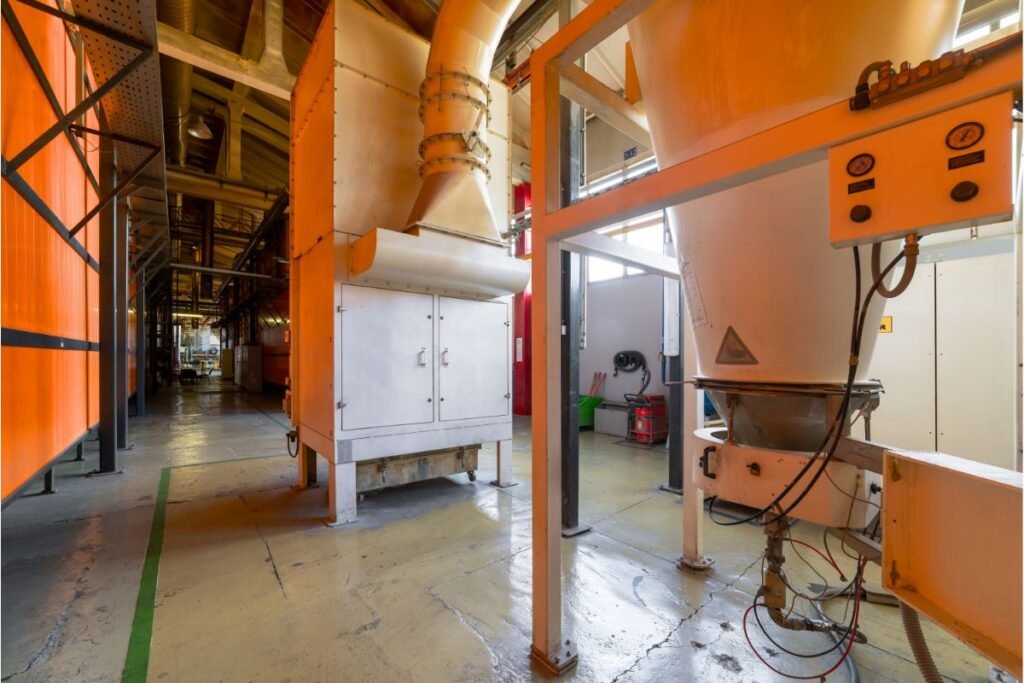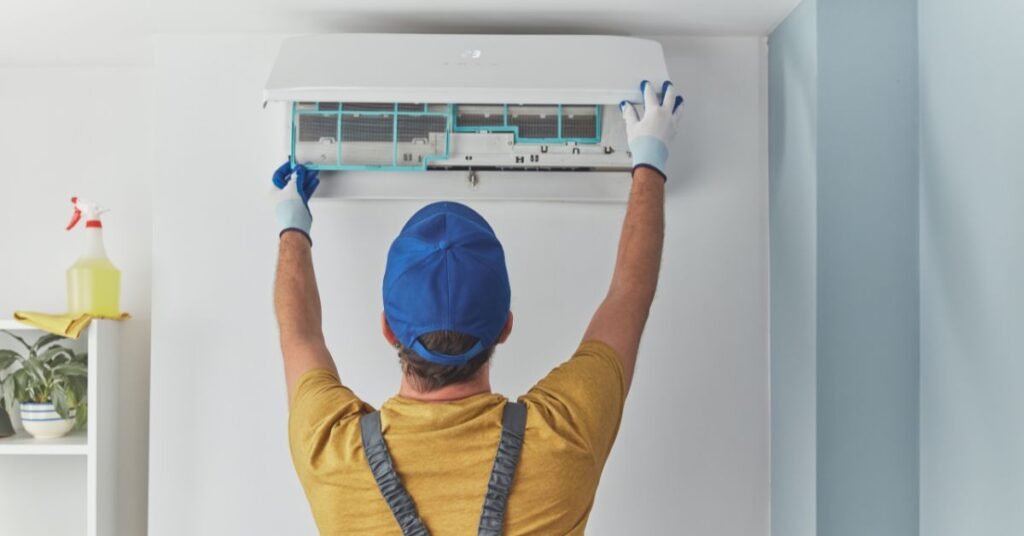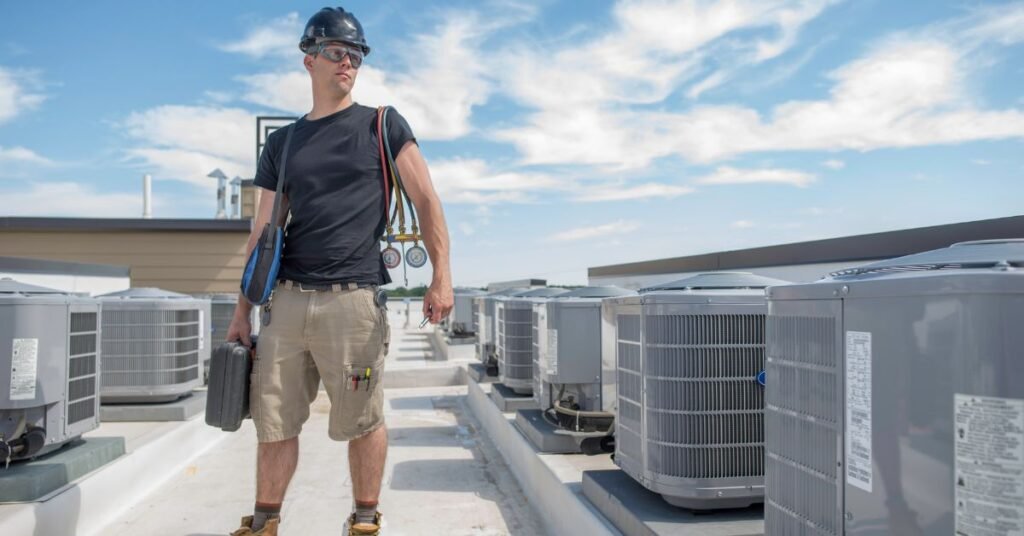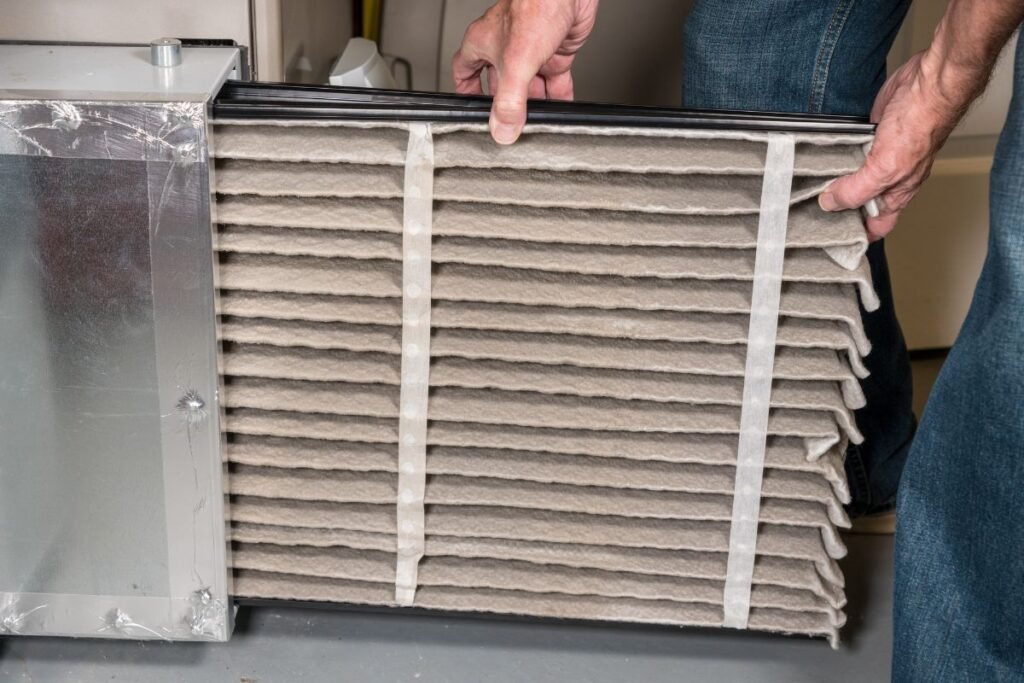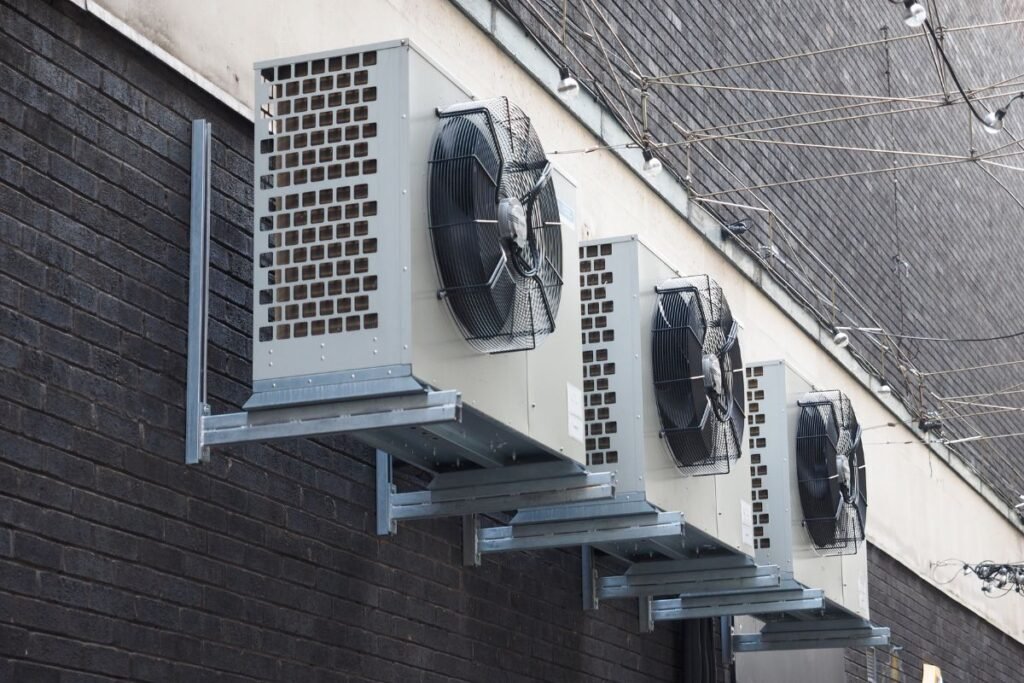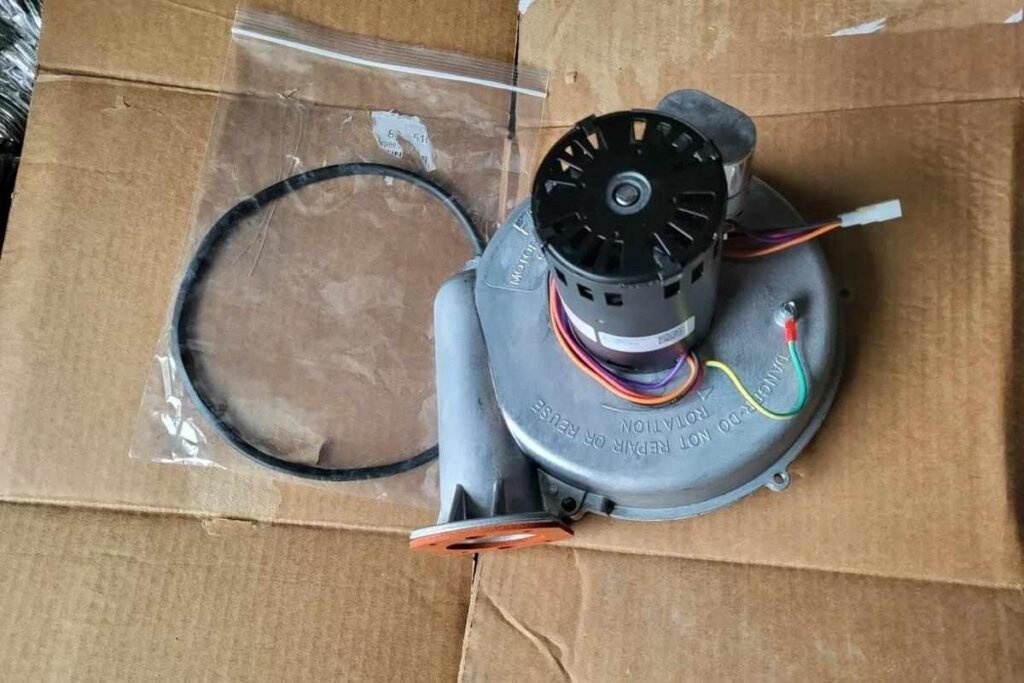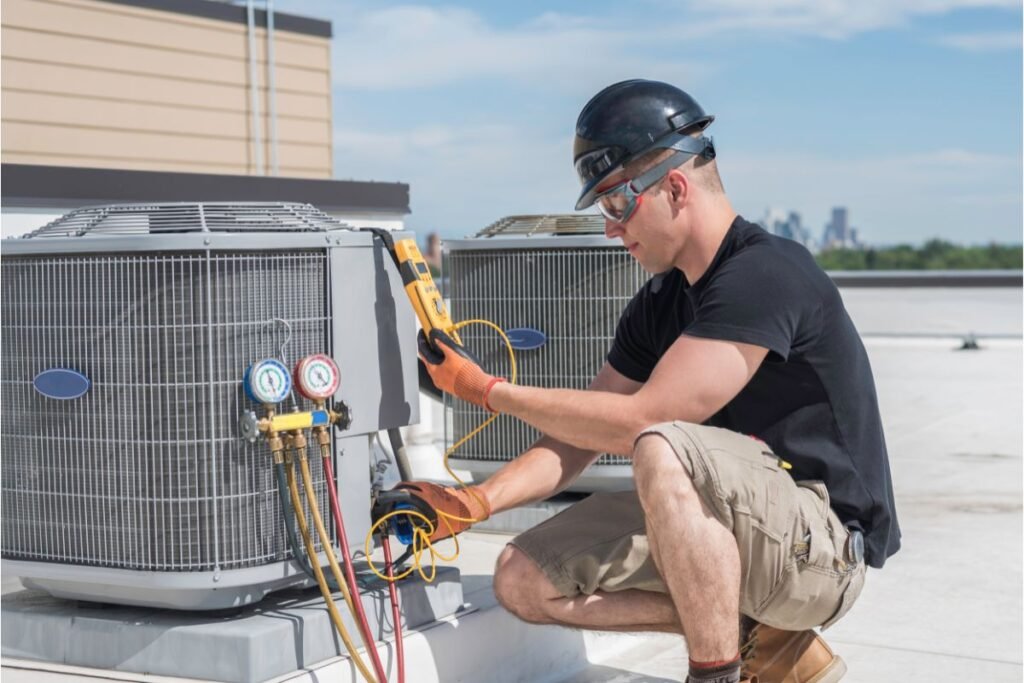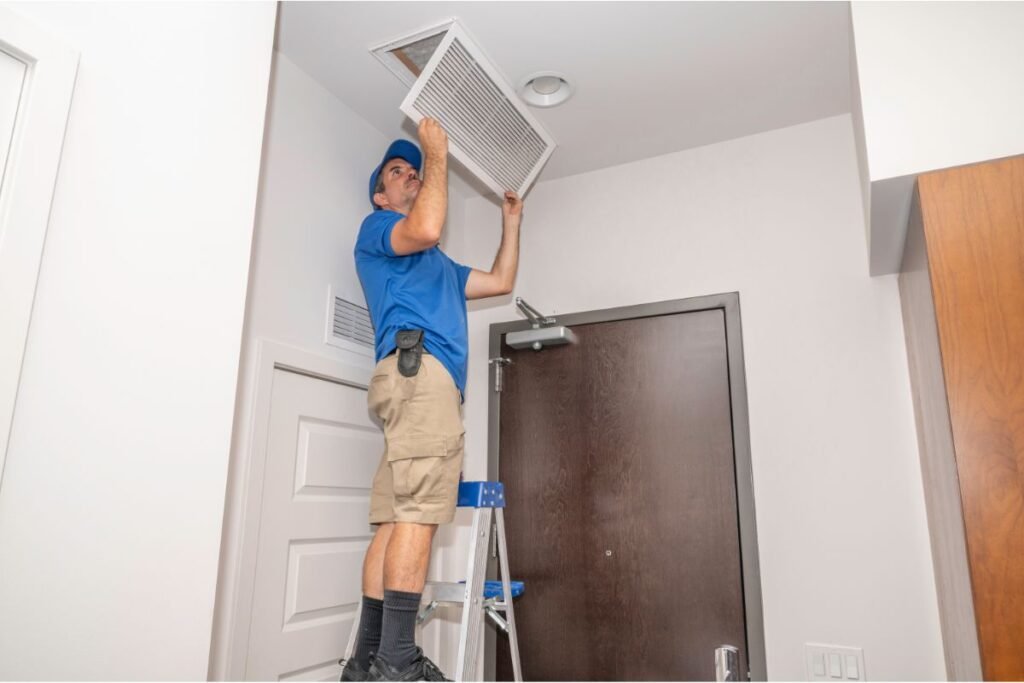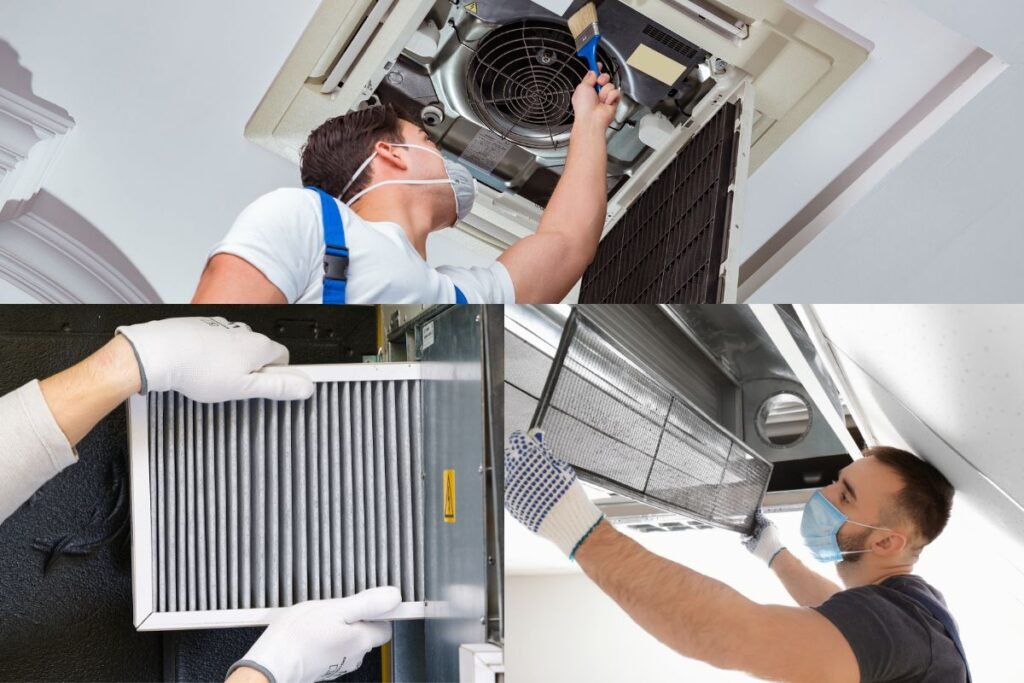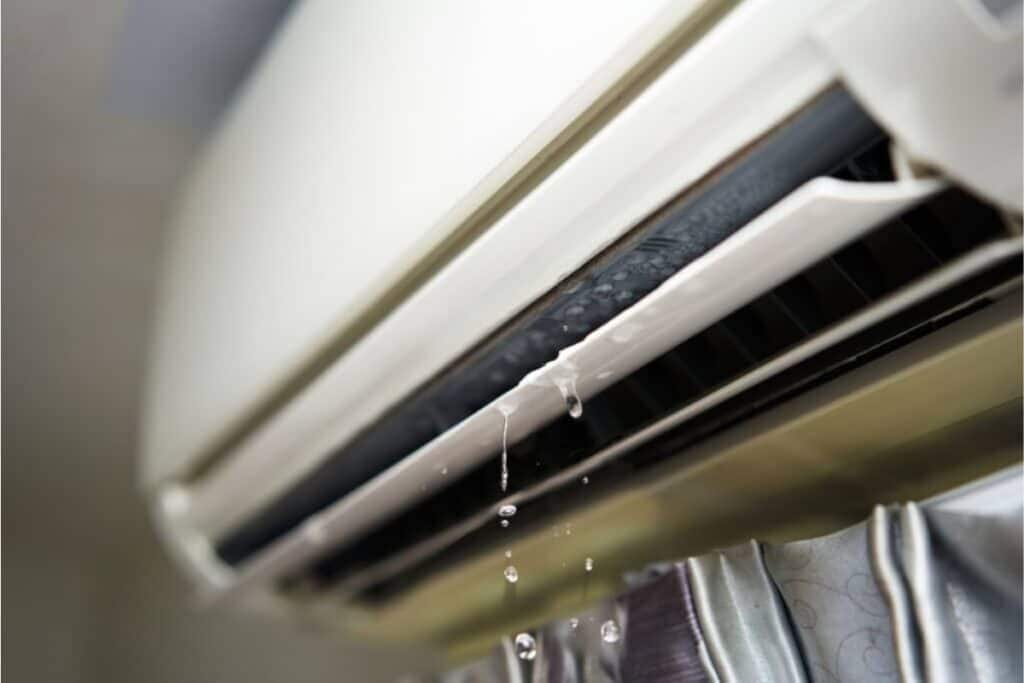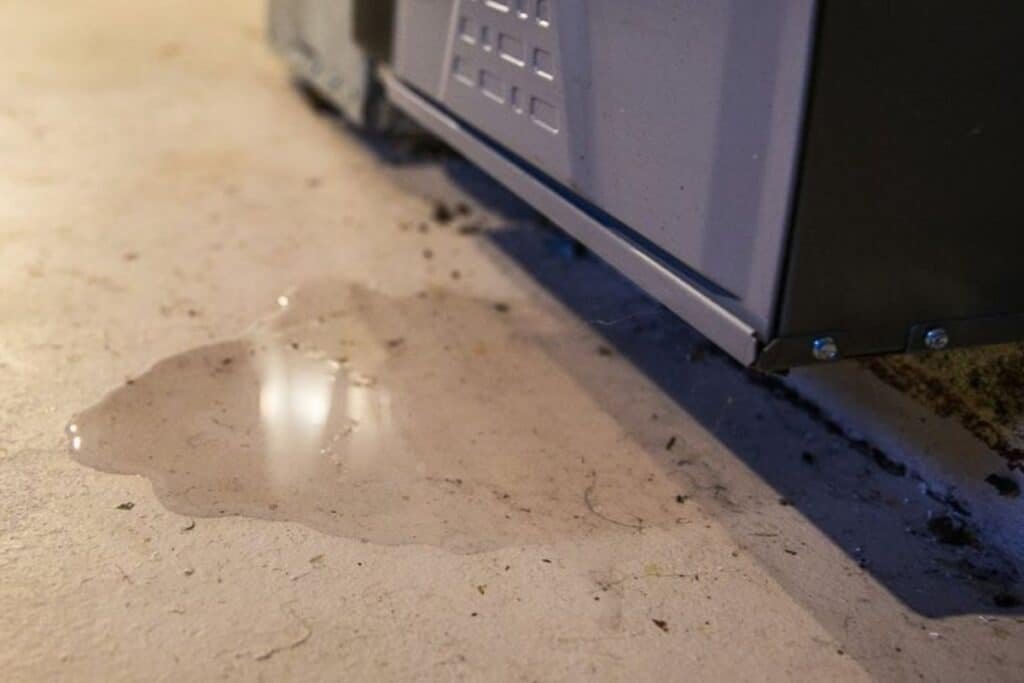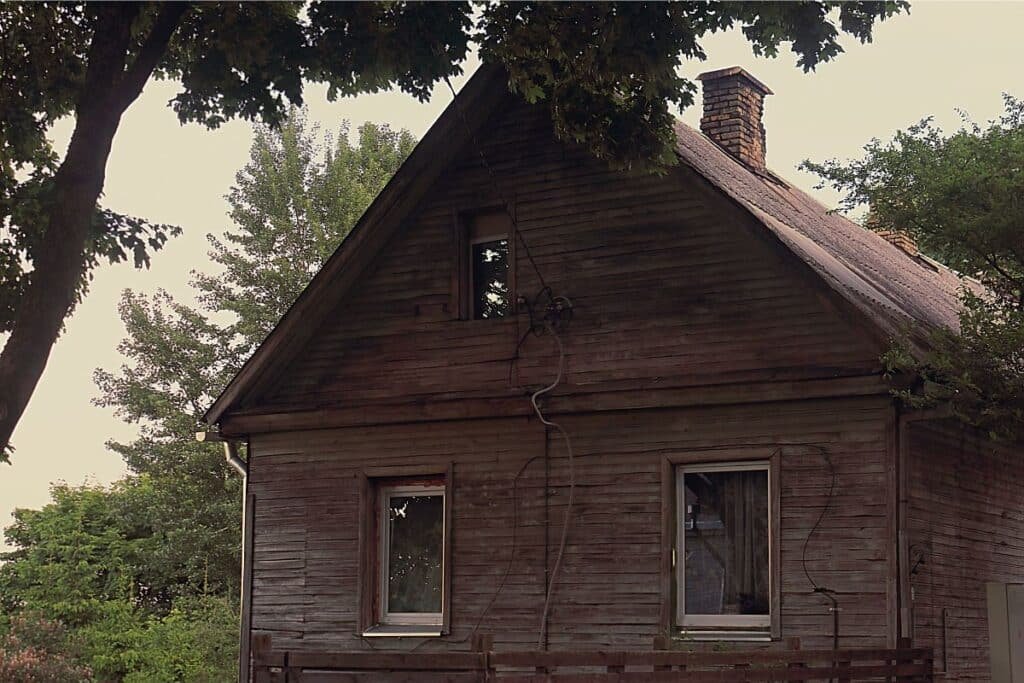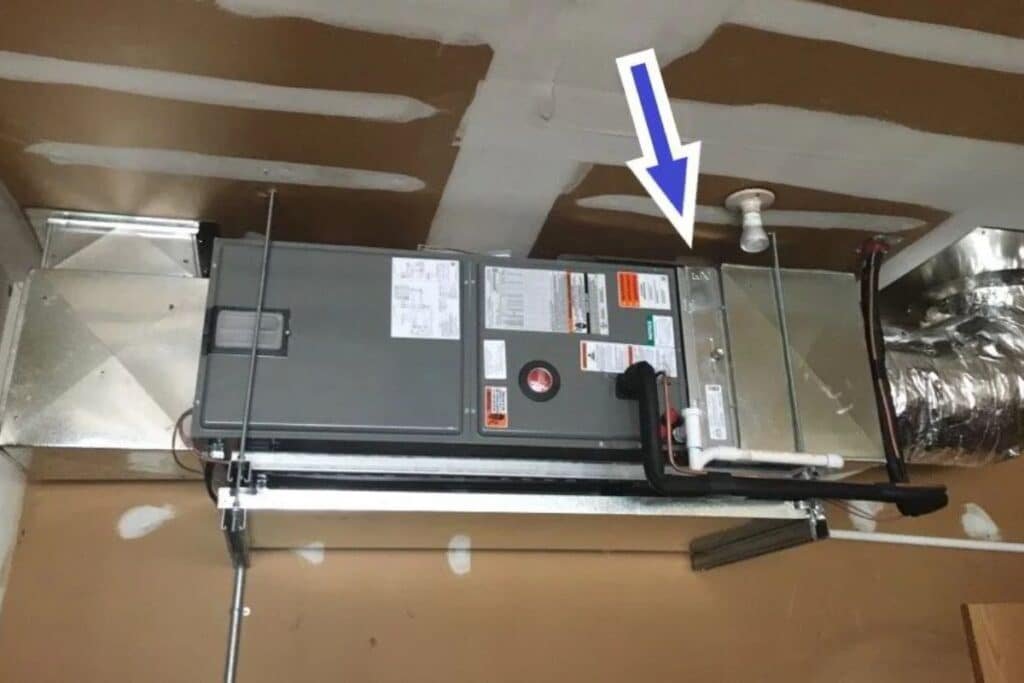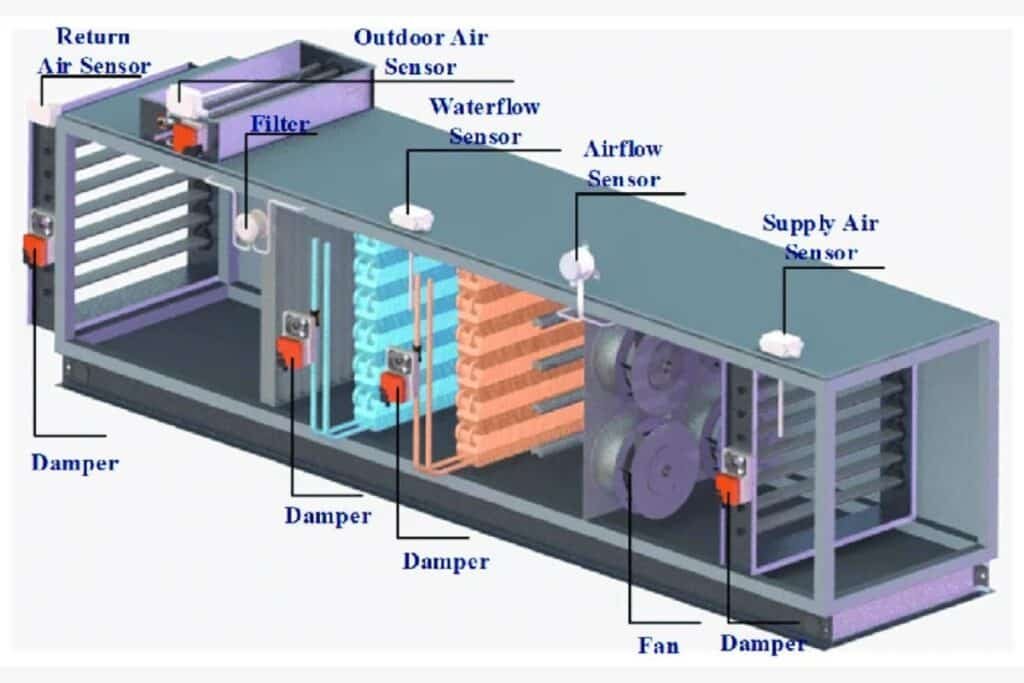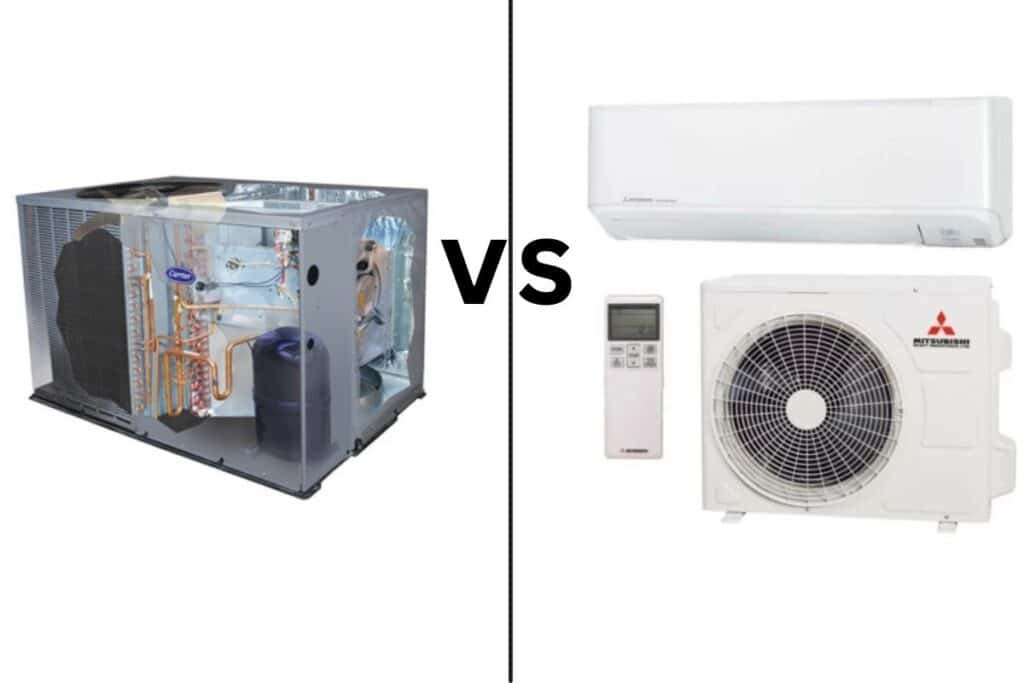If you are looking for which HVAC filters give best air flow, here you will get your answer. Genarally fiberglass filters are the top choice because they don’t block air much. However, it’s not just about airflow. The type of filter you choose also affects air quality and how often you need to maintain it. In this post, we will explain the different types of HVAC filters, like pleated, electrostatic, washable, UV, media, and carbon filters and their pros and cons. You will also find out why it’s important to change your air filters regularly and how often to do it, especially if you have pets, allergies, or use your HVAC system a lot. By the end, you will know which filter suits your home best.
What is an HVAC Filter?
An HVAC filter is a part of your heating, ventilation and air conditioning (HVAC) system that traps dust, dirt, and other airborne particles.The filter sits between the air intake and the HVAC system to clean the air before it spreads through your home. By capturing pollutants such as pollen, pet dander, and even mold spores, HVAC filters improve indoor air quality and protect the system from debris buildup. Regular maintenance of the filter is essential because a dirty filter can reduce efficiency and increase energy costs
Types of Filters for HVAC
There are various types of HVAC filters available, each offering different levels of filtration and airflow. So you need to choose the right filter according to your priorities, like it’s cost, air quality, or ease of maintenance. Let’s take a closer look at the different types of HVAC filters and explore their pros and cons.
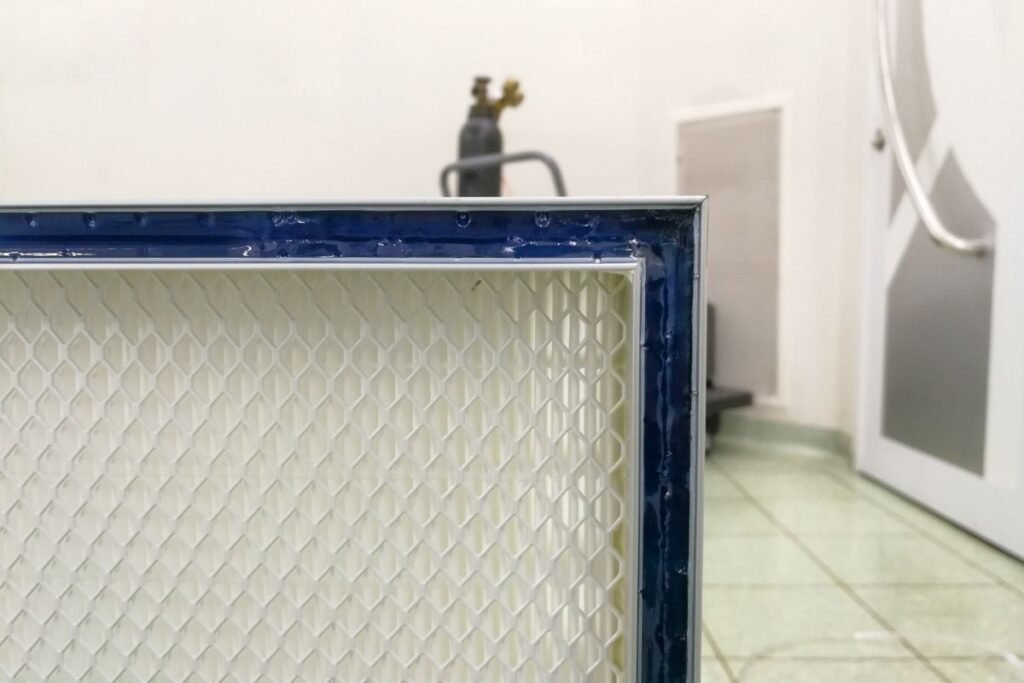
Fiberglass Filters
Fibreglass filters are one of the most basic and affordable types of HVAC filters. They are made from layers of fine fiberglass strands arranged to create a barrier for large particles such as dust, dirt, and debris. They are often considered entry-level filters. Fiberglass filters are widely available and are commonly used in residential HVAC systems.
- Pros: Fibreglass filters are very budget-friendly, which makes them an attractive choice for people who want a low-cost solution. These filters do a decent job of preventing large particles from entering your HVAC system, which helps protect the equipment and maintain its efficiency. Their lightweight design means they don’t put much strain on airflow, which can be beneficial for maintaining consistent heating or cooling throughout your home.
- Cons: The downside of fibreglass filters is their limited filtration capabilities. While they can block large particles, they do not effectively capture smaller contaminants such as pollen, mold spores, or pet dander. This means they aren’t the best choice for improving indoor air quality, especially for households with allergy sufferers. Fibreglass filters also need to be replaced frequently. In every 30 days it need to change
- Usage: Fibreglass filters are best suited for homes where air quality isn’t a primary concern but keeping the HVAC system protected from dust and debris is important. They are a good choice for rental properties or budget-conscious homeowners who don’t require heavy filtration.
Pleated Filters
Pleated filters are made of folded sheets of cotton or polyester, which increases the surface area and allows the filter to trap more particles. The pleats create a denser structure compared to fibreglass filters.
- Pros: Pleated filters offer a significant upgrade over fibreglass filters. The increased surface area allows them to capture a wider range of airborne particles, including pet dander, pollen, and mold spores. This makes pleated filters a good choice for households with allergy sufferers or for those wanting better indoor air quality. Despite their higher filtration capabilities, pleated filters still allow for reasonable airflow, especially when changed regularly.
- Cons: Because pleated filters are made from thicker material, they can slightly reduce airflow, especially if they aren’t changed on time. Over time, a clogged pleated filter can cause problems such as your HVAC system to work harder, increasing energy consumption and potentially reducing the lifespan of the system. Pleated filters are also more expensive than fibreglass filters because they generally last longer. It lasts up to 90 days (depending on conditions).
- Usage: Pleated filters are ideal for homeowners who want better filtration without significantly sacrificing airflow. They are a great middle-ground option for people who want to balance air quality and HVAC system performance.
Electrostatic Filters
Electrostatic filters use static electricity to attract and capture particles as air passes through them. Depending on the model, these filters can be disposable or washable. They are known for their ability to remove allergens such as dust, pollen, and smoke particles.
- Pros: Electrostatic filters are highly effective at capturing small particles. The electrostatic charge draws in airborne contaminants, improving indoor air quality. They are a great choice for households with allergy or asthma sufferers. Additionally, washable electrostatic filters can be reused after cleaning, saving money in the long run.
- Cons: While they are great for air quality, electrostatic filters can slightly reduce airflow due to their denser design. Over time, if not cleaned or replaced regularly, they can become clogged, further restricting airflow. Washable versions require regular maintenance. If you fail to clean them properly, then it can lead to reduced efficiency or even mold growth.
- Usage: Electrostatic filters are best for homes where air quality is a top priority. They are a solid investment for those who need to reduce allergens but should be cleaned or replaced regularly to maintain airflow.
Washable Filters
Washable filters are designed to be cleaned and reused, making them an eco-friendly and cost-effective option. These filters are typically made from durable materials that can withstand multiple washings without losing their effectiveness.
- Pros: The biggest benefit of washable filters is that they can be reused. This makes them an environmentally friendly and economical choice in the long term. Washable filters can capture larger particles such as dust, dirt and hair.
- Cons: While washable filters offer the advantage of reusability, they are less effective at capturing smaller particles like pollen or mold spores. They also require regular cleaning to maintain their efficiency. After washing, if not dried properly, they can become breeding grounds for mold and bacteria. Additionally, they may not be the best choice for households, especially if they are allergy sufferers.
- Usage: Washable filters are a good option for those who prioritize cost savings and sustainability. They are suitable for homes where basic filtration is needed but are less effective for improving air quality.
UV Filters
UV filters use ultraviolet light to kill microorganisms such as bacteria, viruses and mold spores. They are often used in combination with other types of filters to improve air quality in environments where germs and allergens are a concern.
- Pros: The primary benefit of UV filters is their ability to kill harmful bacteria and viruses. This ability makes them an excellent choice for improving air quality in homes with high allergen or germ exposure. UV filters are particularly useful in humid climates where mold growth can be a problem. UV filters help create a healthier indoor environment by stopping mold and bacteria from spreading through the air.
- Cons: UV filters are effective at killing germs but they do not capture dust or larger particles. They are usually used in combination with other filters to provide comprehensive air purification. Additionally, UV filters can be more expensive to install and maintain because the UV bulbs will need to be replaced periodically.
- Usage: UV filters are perfect for homes or businesses where air quality is a major concern. They are especially useful in places prone to mold or bacteria growth. They are often used in healthcare facilities but can also be beneficial in residential HVAC systems.
Media Filters
Media filters are high-capacity filters that offer excellent filtration without significantly restricting airflow. These filters are made of multiple layers of filtration media that can capture both large and small particles.
- Pros: Media filters are highly effective at capturing a wide range of airborne particles, including dust, pollen, mold spores, and even some bacteria. Despite their high filtration capabilities, media filters do not restrict airflow as much as pleated filters.This makes them a great choice for maintaining both air quality and HVAC system performance. They also have a longer lifespan than standard filters, lasting up to 6 months.
- Cons: Media filters tend to be bulkier and may require professional installation. They are also more expensive upfront than other filters. However, their long lifespan, it can offset this cost.
- Usage: Media filters are perfect for homes that need strong air filtration without compromising on airflow. They are ideal for people with allergies or respiratory issues. They capture a wide range of particles without putting strain on the HVAC system.
Carbon Filters
Carbon filters are known for their ability to remove odors and volatile organic compounds (VOCs) from the air. They contain activated carbon, which absorbs harmful chemicals and gases.
- Pros: The main advantage of carbon filters is their ability to eliminate unpleasant odors and harmful chemicals from the air. This makes them a great option for homes with pets, smokers or anyone concerned about air quality.. Carbon filters can also be combined with other types of filters for more comprehensive filtration.
- Cons: Carbon filters excel at odor control but are not very effective at removing dust or large particles from the air. As a result, they are often used in conjunction with other filters to provide more complete air purification. Additionally, carbon filters can be more expensive than standard filters.
- Usage: Carbon filters are ideal for households who dealing with odors or chemical pollutants. They are especially useful in homes with smokers or where cooking odors are a concern. However, for full air purification, it’s best to pair them with a filter that traps dust and larger particles.
Which HVAC Filters Give Best Air Flow?
When it comes to finding which HVAC filters give the best air flow, fiberglass filters usually come out on top because they have the least resistance. Their loose, minimal construction allows air to pass through easily, which keeps your HVAC system running efficiently. However, while they allow for the best airflow, they don’t do a great job at filtering smaller particles and contaminants. Pleated filters, though slightly more restrictive, offer a better balance between airflow and filtration. Washable filters also provide decent airflow, but they require frequent cleaning to maintain efficiency. If you are looking for both excellent filtration and good airflow, media filters can be a solid choice because they maintain high filtration without overly restricting air movement. So overall, the filter you choose will depend on youe prioritize airflow or indoor air quality.
Why You Need to Change Your Air Filters Regularly
Changing your air filters regularly is important for several reasons. A clean filter improves indoor air quality by trapping dust, pollen and other airborne particles before they can enter your home’s air. When filters get clogged with dirt and debris, they block airflow. This makes your HVAC system work harder to circulate the air. This can lead to higher energy bills, reduced system efficiency and even damage to your system over time. Replacing your filters every 1 to 3 months keeps your HVAC system running smoothly. It also ensures good airflow and helps maintain a healthier living environment.
How Often Should HVAC Filters Be Changed?
The frequency at which HVAC filters should be changed depends on several factors, including the type of filter, the environment and the specific needs of your household. Here’s the Factors that are responsible for Frequent Changes:
- Homes with Pets: If you have pets, dander and fur can clog filters faster. It’s recommended to check and replace filters more frequently (every 30 to 60 days).
- Allergies or Respiratory Issues: Households with allergy sufferers may benefit from changing filters every 30 days to ensure optimal air quality.
- High Usage: During seasons when your HVAC system is in heavy use (such as summer or winter), you may need to change filters more frequently.
- Poor Air Quality: If you live in an area with high levels of dust, pollution, or construction, your filters may clog faster and require more frequent replacements.
Conclusion
In conclusion, the right HVAC filter depends on your needs. Needs mean airflow, air quality, or budget. Fiberglass filters offer the best airflow, while pleated and electrostatic filters balance air quality and performance. Washable filters save money but need regular cleaning and carbon and UV filters help with odors and bacteria. No matter which filter you choose, regular replacements are key to keeping your system efficient and your home’s air clean. Understanding your options helps you make the best choice for a healthy and cost-effective HVAC system.
Frequently Asked Questions
What is the markup on air filters HVAC?
The markup on HVAC air filters can change depending on where you buy them. Usually, stores charge between 30% to 100% more than what they paid. For example, if they paid $10, they might sell it for $20 or more. Buying in bulk or directly from the manufacturer can sometimes help you get a better price.
Where are HVAC filters located?
HVAC filters are usually found near the air handler unit or in the return air duct. In most homes, this is behind the large vent on the wall, ceiling, or floor. Some filters are inside the HVAC unit itself, like in the blower compartment. It is a good idea to check your HVAC manual to find the exact spot.
Are HVAC filters recyclable?
Not all HVAC filters can be recycled. Disposable filters, especially those made of fiberglass, should be thrown away after use. However, some filters made from recyclable materials, like cardboard or polyester, might be accepted by certain recycling centers. Check the label on the filter and your local recycling rules to see if they can be recycled.
Do all HVAC systems have filters?
Yes, all HVAC systems have filters. Filters are important because they catch dust, dirt and other particles, stopping them from getting into the system or your home. If you have a furnace, air conditioner, or heat pump, each system has at least one filter to keep the air clean.
What is the best MERV rating for HVAC filters?
The best MERV rating for most homes is between MERV 8 and MERV 13. MERV 8 filters are good for catching dust. If you have pets or allergies, MERV 11 or 12 are better because they catch smaller things like pet hair or pollen. MERV 13 filters catch even more but can slow airflow in some systems. Check your HVAC system to see which one is best for you.
Are MERV 13 filters bad for HVAC?
MERV 13 filters are not bad but they can reduce airflow if your system isn’t built for them. These filters catch more particles, but they are thicker, so air doesn’t flow as easily. If your system can’t handle that, it might have to work harder, which can lead to higher energy bills. Check your system’s manual or ask a professional to see if a MERV 13 filter is right for you.
